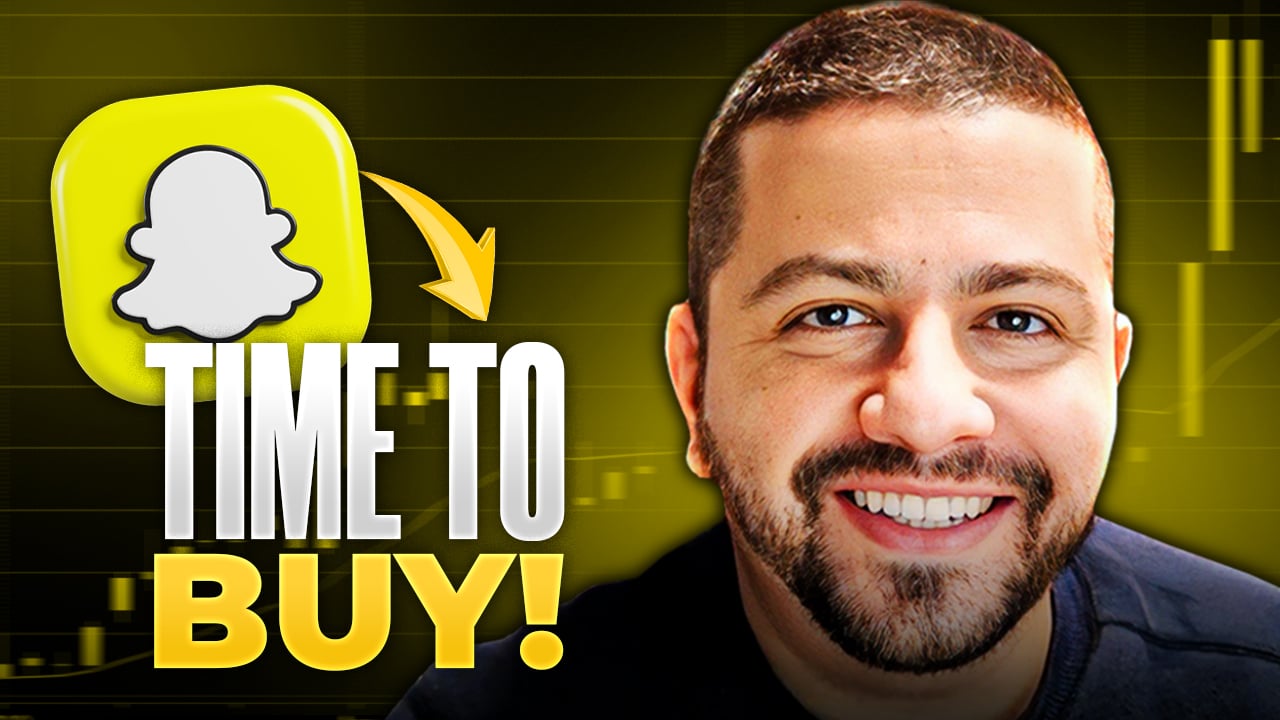Snap (SNAP +0.00%), the parent company of Snapchat, finally went public last week. Shares jumped in the first two trading days to questionable valuation levels.
In this clip from Industry Focus: Tech, Dylan Lewis and Evan Niu talk about how much the company grew in its first day of trading and why there's so much excitement around Snap. Also, the hosts look at the lockup period on the company -- why Snap is insisting that so many of its investors own the company for at least a year, why it is shortening its lockup period for employees, how that's affecting share price and how it might affect share price a few months down the line, and more.
A full transcript follows the video.
This podcast was recorded on March 3, 2017.
Dylan Lewis: It seems like some of those early Snap insiders did pretty well. The market has been pretty kind to the ephemeral messaging app in its first day and hour of trading on the market. What is it, up 20% today?
Evan Niu: Yeah, it's up another 20% today, it jumped 44% yesterday, so right now it's about a $34 billion company already. [laughs]
Lewis: Which is nuts. That is multiples of Twitter's market cap.
Niu: Yeah, it's two to three times at least. At yesterday's close, it was 2.5X the market cap of Twitter, so today is probably pushing three.
Lewis: That is insane. There are some crazy valuation metrics that we might briefly touch on with that. But when you look at this market reaction, there was a lot of demand for this issuance. I read on CNBC that the issuance, the IPO, was 12 times oversubscribed, which basically means the overall demand for the shares at issuance price, when the banks were underwriting that IPO and they were talking to clients, was 12X what was being made available by the company. So, you see what's going on in day one and day two of it hitting the market, and you have people that probably didn't get quite the allocations they were looking for in the underwriting process and are now trying to get more. You also have people who are just generally scooping up demand on hype. There's a lot going on there with Snap.
Niu: Yeah, I definitely agree. A lot of people are probably interested in this deal, and the underwriters only have so much that can go around, so the allocations probably weren't as much as people were hoping for. But that's kind of what happens when you have a deal that has as much excitement as this one. To circle back on some of the valuation metrics you mentioned earlier, as of last night, Snap closed at $24.50, which put them at a $28 billion company, trading at a price-to-sales [ratio] of like 71. Today, with this jump right now, that's getting closer to 85. They made about $400 million in revenue last year. If they're at $34 billion, that's 85X sales. It's just insane. [laughs]
Lewis: That is crazy. And we had talked about, in the episode we did two weeks ago looking at Snap's S-1, what a rich valuation it was going to be coming in at. And that was when they were speculatively somewhere between $20-24 billion on this issuance. To see it go up even more continues to raise those red flags that we were talking about. Listeners, this episode is going to be more of a follow on the IPO and some news we've seen recently about the company. The deep dive that was very core business-metrics-oriented we did two weeks ago. You can always go back and check that one out for a discussion of user base and monetization and the approach there. But, just a heads-up. One of the news items that I wanted to touch on was a look at lockup period with the IPO. This is something kind of a folklore, we don't know 100% what is going on here. But, a couple days before the IPO, Snap had mentioned that they were expecting investors buying up to a quarter of the shares in the IPO to agree to not sell them for a year. Which seems crazy to me, that large institutions would agree to that.
Niu: Yeah, it's a pretty unusual requirement, as if this offering wasn't unusual enough with some of the other things they've been doing, like the voting stuff we talked about before. This is a really weird ask of institutional investors. And it's a direct contrast to the lock-up they're doing. They reduced the lock-up period for some of their own employees. At the same time, they're asking these new investors to come in and hold on for a year. Of course, the goal is to mitigate volatility, because IPOs tend to be really volatile. So, they want some commitment from these investors, say, "Hey, don't sell," to try to manage that. In their prospectus, they didn't really change their language. They said they expected to have 50 million shares worth of these agreements, but they pointed out they do not have any firm agreements or commitments yet. I'm curious if they actually got any.
Lewis: Yeah, it's hard to know if anyone took the bait on that. The benefit for Snap here is pretty clear. The lock-up period, like you said, helps reduce volatility, moderates the stock price, prevents people from getting in and out. It incentivizes people to buy and hold. But if they did wind up getting some people to go into these binding commitments, that might be another reason why the stock is moving so wildly in the first couple days. We talked about how only about 200 million shares being issued, and if 50 million or any fraction of them are also not a part of that, because they can't be sold once they've been issued, then that's obviously going to restrict the supply that's out there for people who are looking to scoop up shares.
Niu: Right.
Lewis: You touched on what was going on with the employees, and I do think this is kind of interesting. Snap announced that they were making some changes to their lock-up expiration. They're basically going to be reducing the amount of time employees need to hold on to shares down from 180 days to 150 days. This is similar to what they were asking of the institutions, and this is a standard thing for insiders at any IPO. But what you'll wind up seeing because of this, I'm guessing, is a decent number of shares becoming available in late July.
Niu: Right. That's always something that anyone looking at trading an IPO should always be aware of, these lock-ups, which tend to put a lot of selling pressure on the stock. I wonder if Snap will do a secondary offering in a few months, just for employees and selling shares, where they're not actually raising money. That's not uncommon these days, for companies to do these follow-on secondaries shortly after the IPO, purely as a way to manage volatility associated with lock-up expiration, because that way they can just kind of, if you know you have a bunch of employees and investors from before that want to sell, you can set up a secondary offering and do it in a more structured and orderly way without flooding the open market with all these sell orders that push the price down. Instead, it's more orderly. And usually, obviously, the company just raised a bunch of money from issuing the shares. Usually, if they do it, they just have it just for the employees to sell shares. The company itself is not actually issuing more shares. So, I wonder if they'll do that. It does seem like they're concerned about volatility, and that's something that companies do these days.
Lewis: Yeah. I also do think it's a little interesting that the commitment they were looking for from some of these large institutions was beyond the period that they were asking employees and co-founders and early investors to hold onto shares of the stock.
Niu: It kind of sense of mixed message. [laughs]
Lewis: [laughs] A little bit. They're clearly looking for long-term buy-and-hold folks there. One of the other news items I saw --
Niu: Really quick, I think it's even more ridiculous that whole one-year period, because during their road show, some investors were asking, "Where do you see yourselves in five years?" Which is a standard interview question. That's a question you should be able to answer.
Lewis: I think I had to answer that when I was coming to the Fool, yeah.
Niu: Yeah, it's a very common question in general. And it's not an unreasonable question to ask, particularly for an investment, and if they're asking you to hold on for a year. And I was reading some reports about the road shows, and they couldn't even answer that question. So, a lot of investors were like, "Where are you going to be in five years?" And they were like, "I don't know." Really? You don't have a long-term vision, or any answer at all? They just dodged the question. I thought that was really suspicious.






